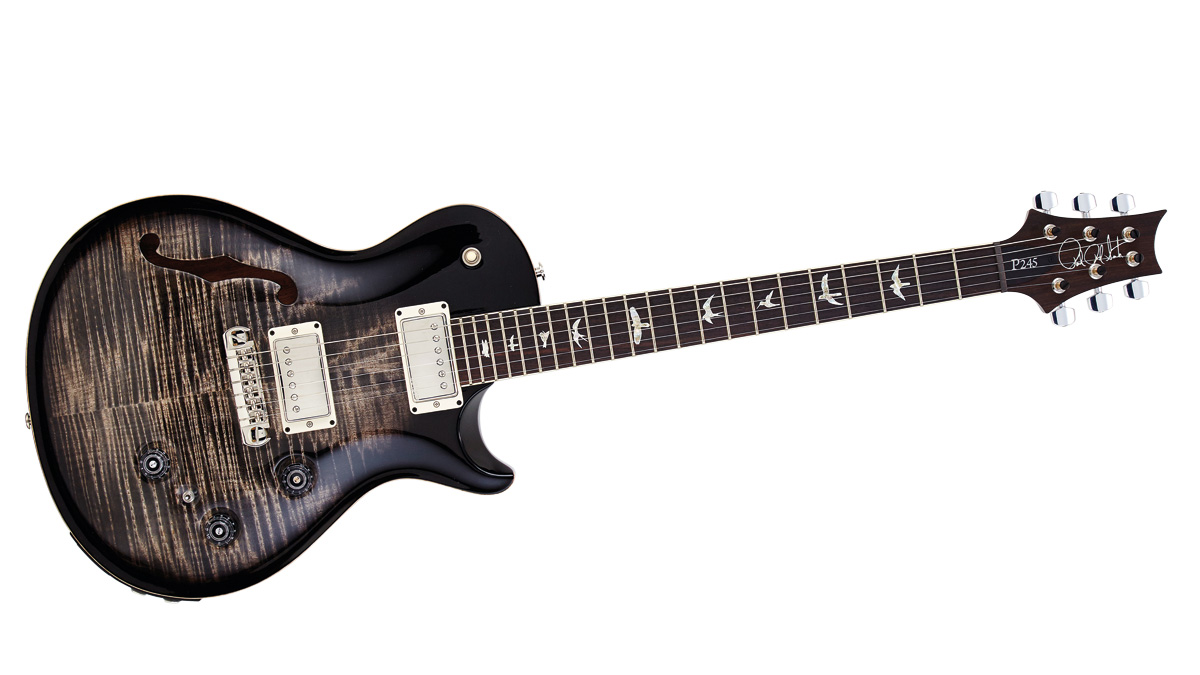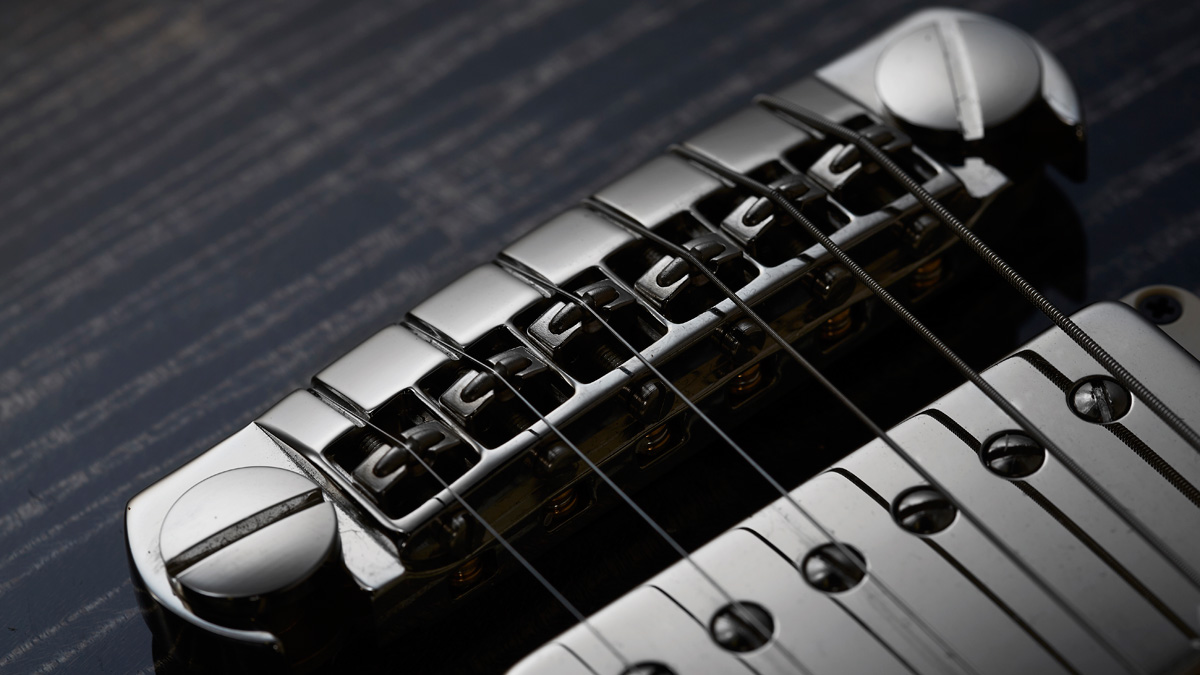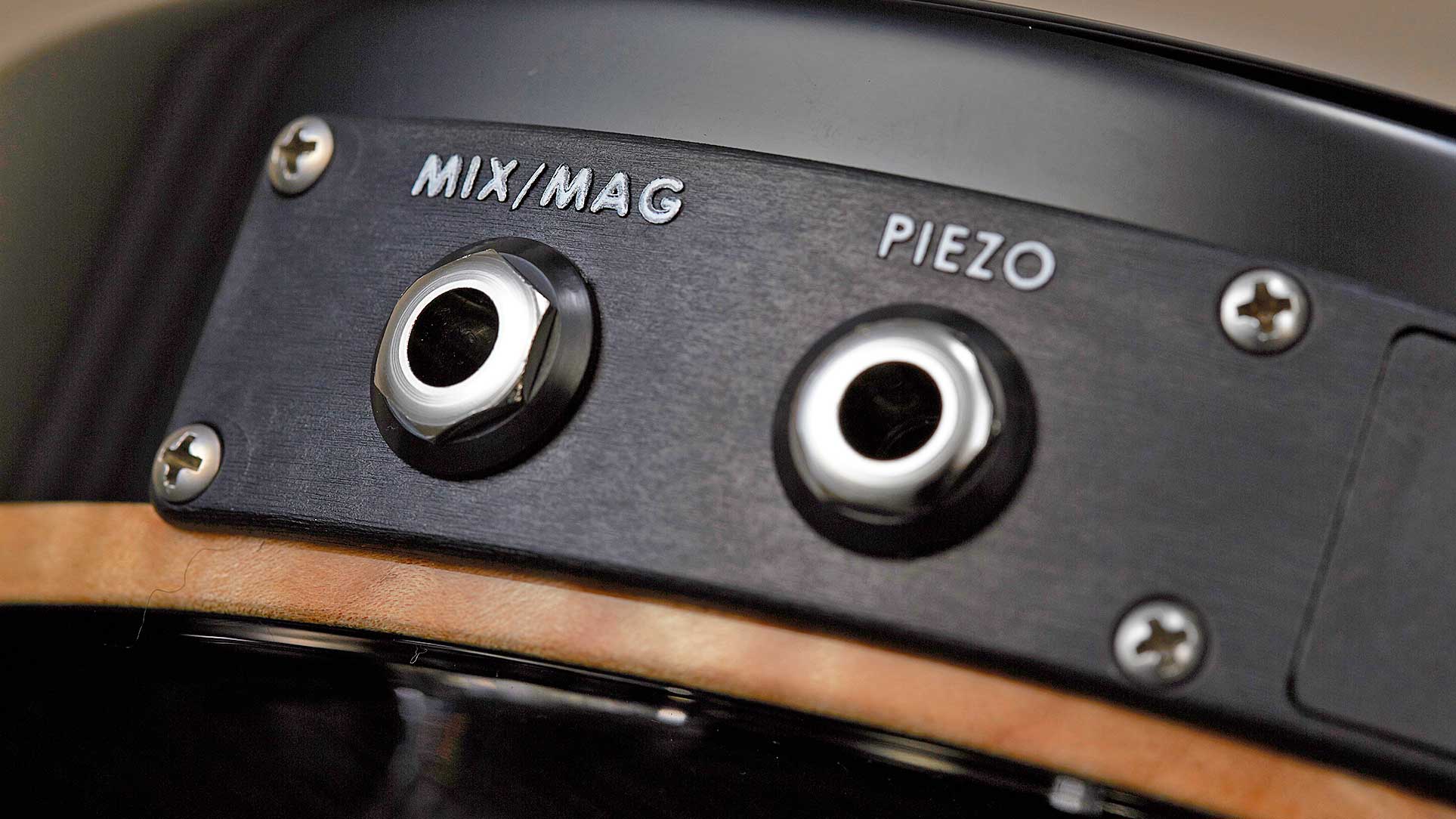MusicRadar Verdict
As the song says, it's not about the money. No, it's about the craft. That's what Paul Reed Smith has worked so hard on these past 40 years and that's what's displayed here.
Pros
- +
One of the most versatile, creative instruments money can buy.
Cons
- -
Perfection doesn't come cheap.
MusicRadar's got your back

PRS P245 Semi-Hollow

PRS P245 Semi-Hollow Bridge

PRS P245 Semi-Hollow

PRS P245 Semi-Hollow
PRS's 'P' series kicked off in 2012 with the P22. That P stands for piezo, and the P22 was the first PRS electric solidbody to feature the LR Baggs/PRS co-designed circuit that provides a highly credible acoustic-like voice in addition to the usual magnetic pickup tones.
The system launched back in 1999, as an option on the Hollowbody, but its size prevented it being fitted to a thinner solidbody until a redesign of the electronics led to the hard-tail 22-fret P22, followed by a vibrato version, and the 24-fret P24 Trem in late 2013.
These Custom-based double-cuts finally got a Singlecut partner, the P245, at the start of this year... and before we had time to review that, this Semi-Hollow version was released in June.
Both guitars closely follow the existing SC245, which gets its name from its 24.5-inch scale length (half-an-inch shorter than PRS's standard scale and very close to Gibson's actual scale of 24.6 inches).
"PRS rarely lets heavy guitars out of its Maryland HQ - unless requested, of course! - and the P245 has a very good single-cut weight of 3.6kg."
The Semi-Hollow is rarer, because although semi-hollow guitars are featured in the more affordable USA-made S2 and Korean SE ranges, they've always been rare birds in the core USA line. Aside from Neal Schon's NS-14, it's the only other semi-hollow guitar (single- or double-cut) in the current high-end line-up.
So, while the P245 is all solid, the Semi-Hollow emulates the earlier SE Zach Myers and the S2 Singlecut Semi-Hollow designs by hollowing out the bass side only of both the mahogany back and flame maple top, indicated by the sole bass-side 'f ' hole - the Hollowbodies have 'f ' holes on both flanks to illustrate their full hollow-body construction. They're thicker in depth, too, and have carved tops and backs, unlike the carved top and flat back here.
PRS rarely lets heavy guitars out of its Maryland HQ - unless requested, of course! - and the P245 has a very good single-cut weight of 3.6kg (7.9lbs); the Semi is marginally lighter at 3.46kg (7.6lbs), while an older Singlecut Hollowbody we had for reference is considerably lighter at 2.8kg (6.2lbs).
Want all the hottest music and gear news, reviews, deals, features and more, direct to your inbox? Sign up here.
Typically, there's nothing remotely penny- pinching about either guitar. PRS has long been the benchmark for ultimate quality and the highly detailed build is never less than impressive.
The headstock's inlaid signature is surrounded by unfinished rosewood; the Phase III locking tuners are elegantly minimalist, while the ever-present bird inlays are ultra-clean. Bound fingerboards are another rarity in PRS's history. Here, the clean white plastic edges, overhung by the perfect frets, match the proprietary-shaped pickup rings. A faultless build.
As the latest in the line of the 'date' series PRS humbuckers, the 58/15s here employ all of the continuing tweaks to the classic PAF design on which they're based.
These pickups don't use the historic coil wire of the previous 'date' pickups, but aside from that, Paul Reed Smith won't divulge anything about their internal construction. A pull/push switch on the tone control provides some partial tap, single-coil texture, but that's just the start of the sonic sorcery.
Outwardly, the new piezo system shares the same side-mounted panel as the previous design with the necessary battery compartment to power the active preamp of the piezo circuit and dual outputs - 'mix/ mag' and 'piezo' - so you can either run the magnetic and piezo outputs to different amps or use them in mixed mono.
Control-wise, we have a three-way mini toggle 'system selector' switch (mag/ both/piezo) but depending on the mono- or dual-output modes, the controls function differently. In 'mix/mag' mode, the volume is global; the lowest control furthest into the body acts as a blend between the magnetic and piezo sounds.
The tone control only works on the magnetic pickups - there's no tone for the piezo system. In 'stereo' mode, with both jacks used, the blend becomes a volume for the piezo system and the global volume becomes a volume for the magnetic system only.
Feel and Sounds
With its Les Paul inspiration, the Singlecut has an immediately familiar feel. Likewise, the 'pattern' neck (a 'wide fat', in PRS's old parlance), that feels meaty but far from over-big, with a subtle V'ing to the lower positions.
Playability is effortless on the bigger-than-standard frets (approx 2.7mm x 1.4mm as opposed to 2.6mm x 1.2mm). Unplugged, there's a vibrant response from the Semi with just a shade of additional openness compared with the solidbody that, typically, is extremely resonant and ringing.
"PRS has long been the benchmark for ultimate quality and the highly detailed build is never less than impressive."
Listening to the acoustic sound into a Line 6 StageSource, the first thing we notice is a very acoustic-like character that, even with flat EQ, is really nicely balanced and underpinned by a very long sustain.
It's certainly a sound with a wide frequency response that allows you, via outboard EQ, to go from crystalline modern brightness, with a slight mid scoop and enhanced high frequency, to a much older electro-acoustic voice or even a more archtop- like character by adding some mids and bringing down the high end.
The potential for recording is vast. Blend in some neck for some jazzy thickness, or start on the neck and add a touch of the piezo. Even in mono mode, it's more than useful, not least for those playing on the jazzier, or modern- soul side of the tracks, and let alone modern country, where the slick playability makes those show-off country licks a lot easier than on a typically heavier strung electro-acoustic.
Singlecuts are big-sounding guitars and cranked up, with no thoughts of piezo acoustic tones, this is classic-rock heaven. There's a tube-y and vocal neck pickup, powerful chunk from the bridge, snarl and bite but never a hint of sharpness. Pulling the gain levels down and pulling up the tone control voices the partial coil-splits, which move to Fender but are never thin or crispy.
Adding a little piezo here works rather well, too: almost like brightening a tracked guitar without altering your core sound.
Of course, if you're using a dual setup, things take on quite gigantic proportions.
It's stadium rock at one extreme, café jazz or singer-songwriter at the other and an awful lot in-between. The characters of the solid and semi versions are shades of a similar thing - certainly not like switching from a Les Paul to an ES-335. But the semi does exhibit a little more thickness and less direct spike. It's the one we'd take to the party.
Dave Burrluck is one of the world’s most experienced guitar journalists, who started writing back in the '80s for International Musician and Recording World, co-founded The Guitar Magazine and has been the Gear Reviews Editor of Guitarist magazine for the past two decades. Along the way, Dave has been the sole author of The PRS Guitar Book and The Player's Guide to Guitar Maintenance as well as contributing to numerous other books on the electric guitar. Dave is an active gigging and recording musician and still finds time to make, repair and mod guitars, not least for Guitarist’s The Mod Squad.
